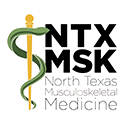Humans can regrow cartilage, much like a salamander regrows its tail!
Research is beginning to dispel some of the mysteries surrounding the human body, particularly how the body regenerates tissue. In the early 1990s, scientists discovered small sections of RNA called microRNA or miRNA. This discovery allowed them to see more precisely how DNA functions in our bodies and the role these tiny molecules play in the process of regeneration of tissue.

